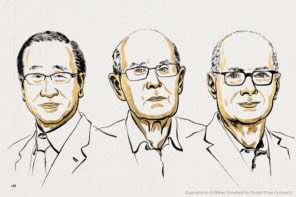Researchers in Japan have unveiled a new way to make silicon-based microelectronic devices. The method involves depositing silicon directly onto a substrate from solution and overcomes some of the problems associated with traditional silicon-processing lithographic techniques, such as using sophisticated clean rooms and expensive vacuum equipment. The researchers say the technique could lead to a way of making large, flexible displays using "ink-jet" technology (Nature 440 783).
Silicon microelectronic devices are currently made by heating highly purified silicon in a vacuum and allowing the resulting “mist” of free silicon atoms to coat a surface such as a plastic. Once deposited, the solid film is etched and patterned using photolithography techniques to produce circuit elements. However, this method is expensive and complicated because it has to be carried out in an ultra-clean environment to ensure that impurities do not contaminate the silicon and ruin its electronic properties.
The new technique, developed by a team led by Masahiro Furusawa of the Seiko Epson Corporation in Nagano-ken, avoids these complications. It uses a liquid form of silicon that can be made at room temperature and pressure and can then be sprayed onto a surface using an ink-jet printer.
Furusawa and co-workers start with a molecule called cyclopentasilane, which contains five silicon atoms joined in a ring. When this liquid is exposed to ultraviolet light, some of the rings break open to form linear chains. These link up end-to-end to form even longer chains, producing a highly viscous fluid.
The team dilute the liquid with an organic solvent, which they then deposit on a surface either by spin-coating or ink-jet printing. The resulting liquid film is finally heated at around 500°C, which converts it into hard, polycrystalline silicon. The team claims to have been able to make transistors from the films.
According to the scientists, the electronic properties of their films are as good as those of ultra-pure films made by conventional processing techniques. Although the properties of the ink-jetted films were not quite as good as those that were spray-coated, the former were still much better than solution-processed films of organic carbon-containing materials.
The new process is not perfect, however, as air and water have to be carefully excluded. Furthermore, the current ink-jetting method does not have the resolution necessary to pattern high-density integrated circuits needed to make computer chips. Nevertheless, the technique could be a novel, inexpensive and easy way of making devices for a range of everyday electronic equipment, including circuits for large-area displays, solar cells and sensors.



